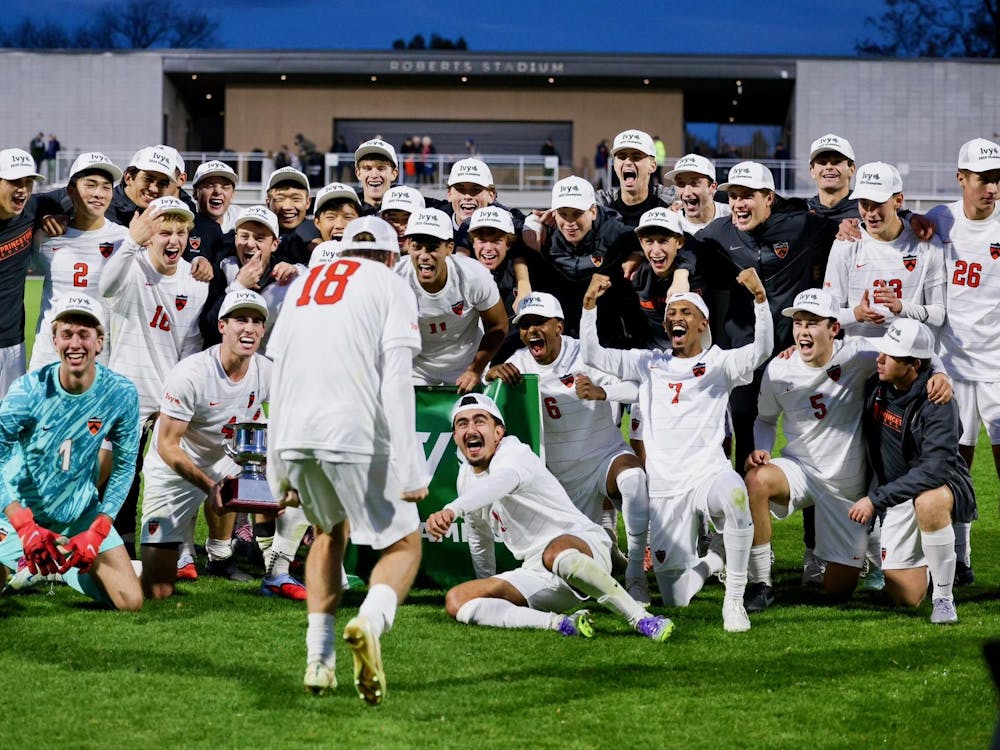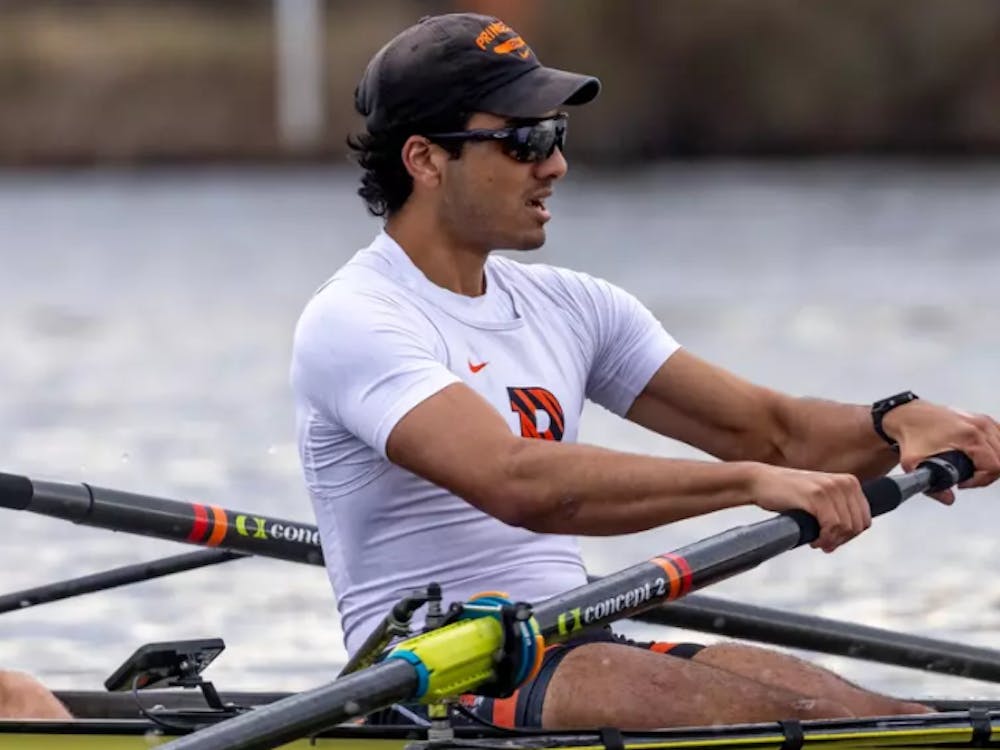Princeton, however, isn’t one of those schools.
Last week, the University finally retired the number 42 — a number shared by football legend Dick Kazmaier ’52 and basketball Hall of Famer Bill Bradley ’65 — the two best athletes ever to walk through FitzRandolph Gate in The Daily Princetonian’s Top 20 Greatest Athletes. The retirement ceremony, held Oct. 24 in Jadwin Gymnasium, came a combined 98 years after the two sports stars graduated from the University. Both Kazmaier and Bradley attended the event, which included a speech by author John McPhee ’53, a film presentation of the two athletes’ Princeton exploits and the unveiling of a sculpture of Kazmaier by noted local artist Tim Maslyn.
Director of Athletics Gary Walters ’67, who hosted the event, said he’s not sure why the University didn’t officially retire the number years ago but added that Princeton’s coaches and equipment managers unofficially retired the number 42 decades ago out of respect for the two men who wore it on their uniforms. Walters, however, wanted to make it official while the two former athletes were still around to appreciate it.
“I’m really happy about [officially retiring the number 42] because Dick and Bill represent the personification of the student athlete ideal,” Walters said.
Kazmaier won the Heisman Trophy, the award given to the most valuable college football player, in 1951. Bradley won the James E. Sullivan Award, the honor given to the nation’s top amateur athlete, in 1965.
“These were players who dominated the sports they played,” Walters said.
Kazmaier, a native of Maumee, Ohio, arrived at Princeton an unlikely candidate for the Heisman. Kazmaier, though a good athlete, was undersized and not particularly fast. Despite these disadvantages, Kazmaier managed to lead the Tigers to back-to-back undefeated seasons his junior and senior years. He led the nation in total offense and pass completions his senior year and still holds six school individual records. In the 1951 Heisman Trophy race, he won 506 first place votes — 11 times more votes than his closest competitor, Hank Lauricella of Tennessee.
After graduating from Princeton, Kazmaier rejected an offer to play for NFL’s Chicago Bears and instead went to Boston to attend Harvard Business School. After graduating, Kazmaier served in the Navy for three years and then started his own company, Kazmaier Associates, a sports marketing and financial services firm that is still thriving in the present day.
In the past half century, the former tailback has served as chairman of the President’s Council on Physical Fitness and Sports under Ronald Reagan, president of the National Football Foundation and College Hall of Fame, president of the World Federation of the Sporting Goods Industry and as a member of the University Board of Trustees.
Bradley, a native of Crystal City, Mo., grew up idolizing Kazmaier and arrived at Princeton hoping to follow in the football legend’s footsteps. He accomplished that feat and more.
Bradley shattered all kinds of school records in his three seasons on the varsity squad. An NCAA rule prohibited freshmen from playing on the varsity team at that time. The gangly Midwesterner scored an incredible 2,503 career points and still holds the University’s top 11 single-game scoring records. Bradley averaged 30.2 points per game at Princeton and never scored fewer than 16 points in a game. His efforts led Princeton to three-straight Ivy League championships, and in the summer before his senior year, Bradley won a gold medal with the U.S. Olympic basketball team at the 1964 Tokyo Olympics. As a senior, Bradley led Princeton to the NCAA Final Four, where the Tigers lost in the semifinals to Michigan, 93-76, but edged out Wichita State for a third-place finish on top of Bradley’s career-high 58-point performance.
After spending a year studying at Oxford on a Rhodes Scholarship, Bradley returned to the United States, where he played for the NBA’s New York Knicks. He retired from basketball in 1977 after winning two NBA championships with New York. The Knicks retired his professional number, 24, in 1984.

But Bradley was just getting started. In 1978, Bradley, a Democrat, ran for one of New Jersey’s U.S. Senate seats. He won, defeating Republican Jeffrey Bell with 55 percent of the vote.
After serving three terms in the Senate, Bradley retired in 1996, only to seek the Democrats’ presidential nomination in 2000. Bradley ran a strong campaign but ultimately lost to then-Vice President Al Gore.
Walters said he thinks the retirement ceremony went well but doesn’t expect to hold more retirement ceremonies in the near future.
“Is it possible? Sure,” Walters said. “But it would be an exception.”







